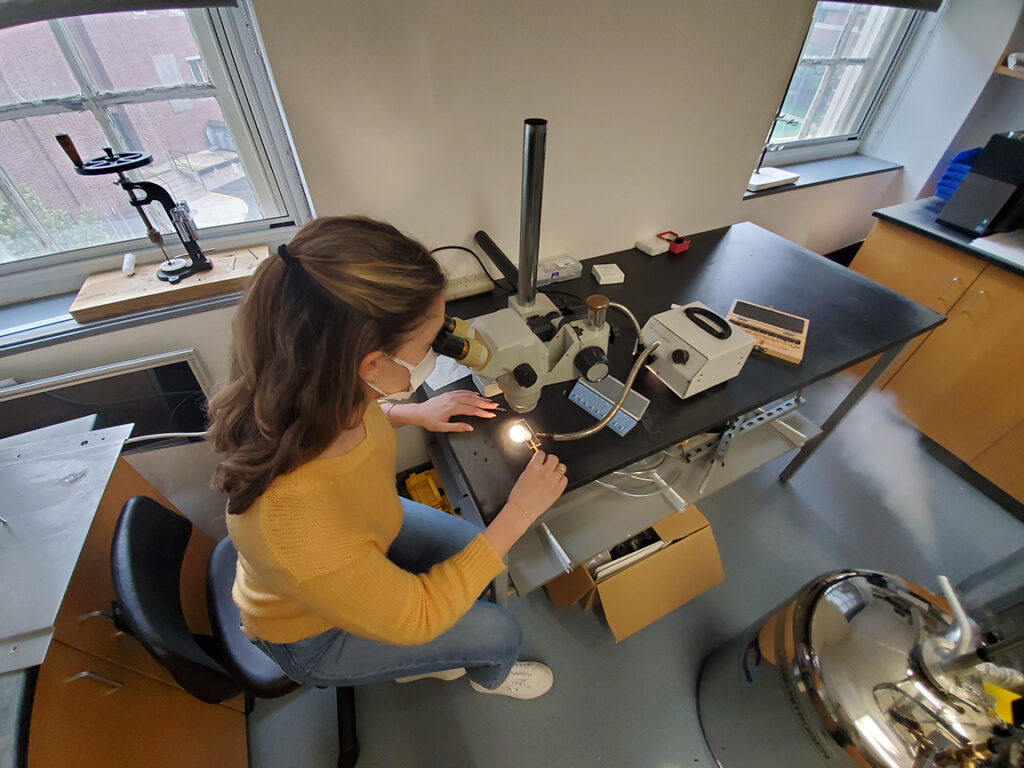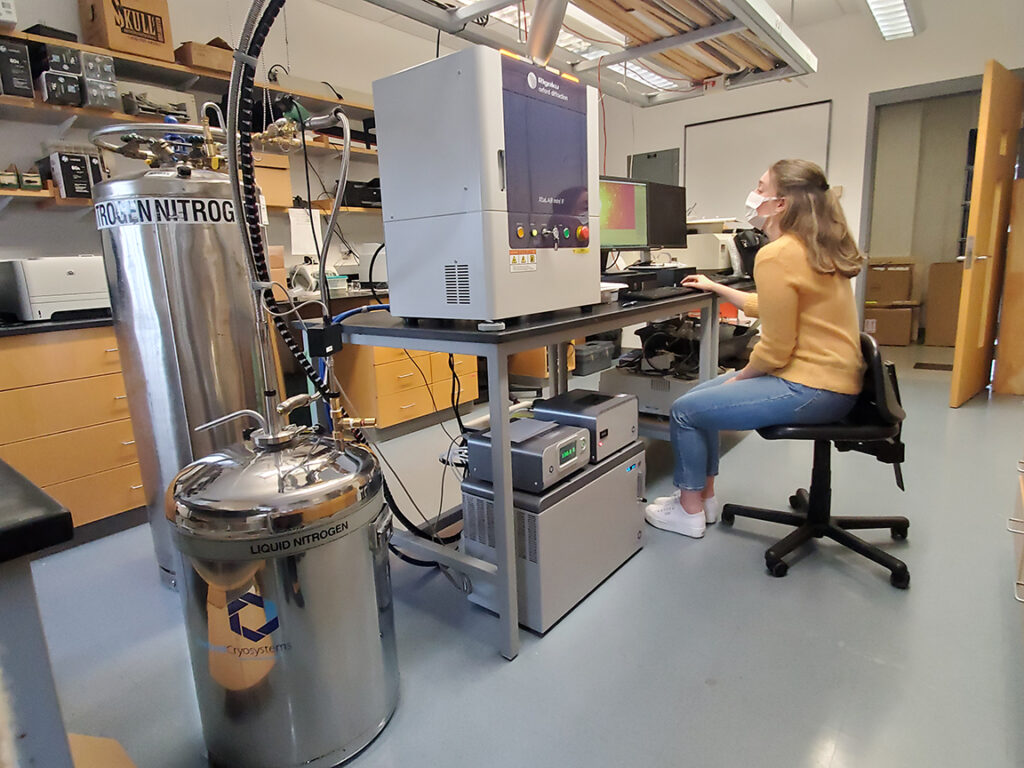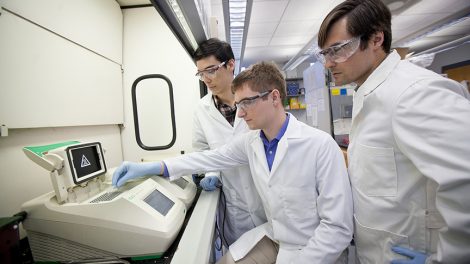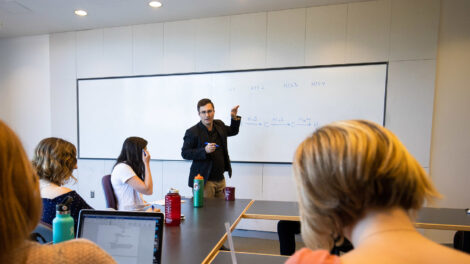New Cutting-Edge Equipment Enhances Faculty, Student Research
By Shannon Sigafoos
Earlier this semester, Lafayette’s Hugel Science Center became home to an XtaLAB mini II single crystal X-ray diffractometer, which provides structure analysis capabilities in a way that minimizes the possibility of misaligning or damaging the system. Acquisition of the diffractometer also ensures that students no longer have to travel outside to other institutions to access this rare and useful tool.
Faculty and students from chemistry, geology, physics, and environmental engineering will utilize the XtaLAB mini II to determine their crystal structures.

Sadie Wolfarth ’22 examines shards of crystals before placing them into the x-ray diffractometer.
Addition of the new equipment was made possible by a grant from the McCutchen Foundation, with a request for the equipment put in by Chip Nataro, Marshall R. Metzgar Professor and head of chemistry, and the grant itself submitted by Markus Dubischar, associate dean of the curriculum, whose academic interests include classical civilizations. The foundation provided $30K to support the diffractometer purchase.
“An X-ray diffractometer is a fancy term that sounds very medical, but it’s not quite the same kind of X-rays that you would use on a person. The [diffraction] X-rays would eat your skin, but ultimately, it’s the same idea. The instrument helps us look at samples and figure out where the pieces fit together,” explains Nataro. “I had been really looking forward to getting our hands on it. Myself and representatives from geology, physics, and environmental engineering had actually submitted a grant [for the XtaLAB mini II] that ultimately didn’t pan out, so when Markus reached out, I told him I’d still love to get this particular instrument.”
The simplified design and easy-to-run software for the diffractometer make it the perfect teaching instrument for chemical crystallography, and students began to work with the instrument soon after its installation.
“When Dr. Nataro was telling us that the diffractometer was on the way, he encouraged me to make crystals to prepare for being able to utilize the instrument. At one point, I had a freezer full of vials waiting, and last week I was finally able to mount a crystal, and I have another running right now,” says chemistry major Sadie Wolfarth ’22, who is also a general chemistry teaching assistant. “We’re breaking dimers and isolating products of the broken dimer, and crystallizing it. Those structures aren’t known, and with the diffractor, you can actually see the lattice structures in the crystal. I already have one publishable structure.”

Sadie Wolfarth ’22 uses the new x-ray diffractometer to look at crystals she grew.
Wolfarth goes on to explain that the computer inside of the diffractometer goes to work taking calculations and measurements of each crystal, which allows students to go through and “solve” the structure by making adjustments to the algorithm the computer put together. And while it can take days of the computer “chugging along” to reach an outcome, the technology that is available to Lafayette students makes a difference in the structure of their work week.
“To have this technology at our fingertips in our own department, and just being able to make a crystal and then get the structure almost immediately, is really important,” says Wolfarth, who is also utilizing the new equipment for her thesis on heterometallic dimers. “If we want to develop a novel compound and publish a good structure, we have this super cutting-edge instrument right here.”
Learn more about this major

Chemistry
Students explore the nature of the physical world, the problems facing a technological society, and the philosophy, methods, and limitations of science.

